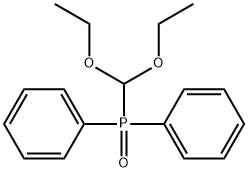2-Pyridinethiol 1-oxide
Synonym(s):C5;Pyrithione;2-Pyridinethiol-1-oxide;C3 and PZP-like alpha-2-macroglobulin domain-containing protein 4;C5a anaphylatoxin
- CAS NO.:1121-31-9
- Empirical Formula: C5H5NOS
- Molecular Weight: 127.16
- MDL number: MFCD00006196
- EINECS: 214-329-4
- SAFETY DATA SHEET (SDS)
- Update Date: 2024-12-18 13:37:16

What is 2-Pyridinethiol 1-oxide?
Absorption
Following oral ingestion, only the pyrithione moiety is absorbed. Less than 1% of administered zinc pyrithione is absorbed from the skin . Radioabeled Zn pyrithione administered to rats, rabbits and monkeys, either orally or via intraperitoneal injection were absorbed into circulatin to extent of 80-90% .
Toxicity
Acute oral LD50 value is 177 mg/kg in rat and 160 mg/kg in mouse. Acute dermal LD50 was 100 mg/kg in rabbit .
Chemical properties
off-white powder
The Uses of 2-Pyridinethiol 1-oxide
2-Mercaptopyridine N-oxide is used in ratiometric fluorescence imaging of intracellular zinc ions in mammalian cultures. It is used in the radical coupling of benzoyl derivatives of 2-deoxy-D-ribose, with heterocyclic bases to give C-nucleosides. It acts as a ligand and form coordination complexes with palladium chloride. It is a precursor to O-acyl thiohydroxamates. Further, it serves as an antifungal agent. In addition to this, it is used in the preparation of 1-oxa-2-oxo-3-thia-indolizinium chloride by reaction with carbonyl dichloride.
The Uses of 2-Pyridinethiol 1-oxide
Precursor to O-acyl thiohydroxamates. Ligates to metals to form biologically active complexes.
Indications
Indicated for the treatment of dandruff and seborrheic dermatitis .
Background
Pyrithione zinc, or zinc pyrithione or zinc pyridinethione, is a coordination complex consisted of pyrithione ligands chelated to zinc (2+) ions via oxygen and sulfur centers. In the crystalline state, it exists as a centrosymmetric dimer. Due to its dynamic fungistatic and bacteriostatic properties, pyrithione zinc is used to treat dandruff and seborrheic dermatitis. Dandruff is a common scalp disease affecting >40% of the world's adult population, and may be caused by fungi such as Malassezia globosa and M. restricta .
Pyrithione zinc is commonly found as an active ingredient in OTC antidandruff topical treatments such as shampoos. It mediates its action by increasing the cellular levels of copper, and damaging iron-sulfur clusters of proteins essential for fungal metabolism and growth . Due to low solubility, pyrithione zinc released from the topical formulations is deposited and retained relatively well onto the target skin surfaces . Other uses of pyrithione zinc include additive in antifouling outdoor paints and algaecide. While its use has been approved in the early 1960's by the FDA , safety and effectiveness of pyrithione zinc has been reported for decades. It is not shown to have any significant estrogenic activity according to the in vivo and in vitro assays .
Definition
ChEBI: Pyrithione is a pyridinethione that is pyridine-2(1H)-thione in which the hydrogen attached to the nitrogen is replaced by a hydroxy group. It is a Zn(2+) ionophore; the zinc salt is used as an antifungal and antibacterial agent. It has a role as an ionophore. It is a pyridinethione and a monohydroxypyridine. It is a tautomer of a pyridine-2-thiol N-oxide.
General Description
2-Mercaptopyridine N-oxide forms complexes on reaction with palladium chloride. It inhibits NADH-fumarate reductase purified from Trypanosoma cruzi. It is precursor to O-acyl thiohydroxamates. It ligates to metals to form biologically active complexes.
Pharmacokinetics
Pyrithione zinc has a broad antimicrobial spectrum of activity, including fungi, gram-positive and gram-negative bacteria . Pyrithione zinc is effective against Malassezia and all other fungi, especially the Malassezia species found on scalp . In patients with dandruff, treatment with pyrithione zinc reduced the amount of fungus on the scalp, which reduces the amount of free fatty acids, thereby reducing scalp flaking and itch .
Metabolism
After oral administration in rabbits, rats, monkeys, and dogs, pyrithione zinc is biotransformed into 2-pyridinethiol 1-oxide S-glucuronide and 2-pyridinethiol S-glucuronide .
Properties of 2-Pyridinethiol 1-oxide
| Melting point: | 69-72 °C (lit.) |
| Boiling point: | 350.2±15.0 °C(Predicted) |
| Density | 1.255 (estimate) |
| refractive index | 1.5480 (estimate) |
| storage temp. | Refrigerator |
| solubility | Soluble in tris-hydrochloric acid. |
| form | Powder, Crystals, and/or Chunks |
| pka | 5.40±0.50(Predicted) |
| color | Off-white to beige or yellow to yellow-greenish or grayish-green |
| Sensitive | Air & Light Sensitive |
| Merck | 14,7994 |
| BRN | 906983 |
| Stability: | Stable. Incompatible with strong bases, strong oxidizing agents. |
| CAS DataBase Reference | 1121-31-9(CAS DataBase Reference) |
| NIST Chemistry Reference | 2-Mercaptopyridine-n-oxide(1121-31-9) |
| EPA Substance Registry System | 2-Pyridinethiol, 1-oxide (1121-31-9) |
Safety information for 2-Pyridinethiol 1-oxide
| Signal word | Danger |
| Pictogram(s) |
 Skull and Crossbones Acute Toxicity GHS06 |
| GHS Hazard Statements |
H301:Acute toxicity,oral H315:Skin corrosion/irritation H319:Serious eye damage/eye irritation H335:Specific target organ toxicity, single exposure;Respiratory tract irritation |
| Precautionary Statement Codes |
P302+P352:IF ON SKIN: wash with plenty of soap and water. P305+P351+P338:IF IN EYES: Rinse cautiously with water for several minutes. Remove contact lenses, if present and easy to do. Continuerinsing. |
Computed Descriptors for 2-Pyridinethiol 1-oxide
New Products
Tert-butyl bis(2-chloroethyl)carbamate (S)-3-Aminobutanenitrile hydrochloride N-Boc-D-alaninol N-BOC-D/L-ALANINOL 3-(2,4-Dimethoxybenzyl)dihydropyrimidine-2,4(1H,3H)-dione 7-Bromo-1H-indazole N-octanoyl benzotriazole 3,4-Dibenzyloxybenzaldehyde 4-Hydrazinobenzoic acid Electrolytic Iron Powder Fmoc-Val-Cit-PAB 1,1’-CARBONYLDIIMIDAZOLE R-2-BENZYLOXY PROPIONIC ACID 4-HYDROXY BENZYL ALCOHOL 1,1’-CARBONYLDI (1,2-4 TRIAZOLE) S-2-CHLORO PROPIONIC ACID (2-Hydroxyphenyl)acetonitrile 4-Bromopyrazole 5-BROMO-2CYANO PYRIDINE 5,6-Dimethoxyindanone 5-broMo-2-chloro-N-cyclopentylpyriMidin-4-aMine 1-(4-Methylphenylsulfonyl)-1H-1,2,3-benzotriazole 1-(2-Chlorobenzyl)-4-nitro-1H-pyrazole 1-(2-Nitrophenyl)-4-phenylpiperazineRelated products of tetrahydrofuran








You may like
-
 1121-31-9 N-HYDROXY-2-PYRIDINE THIONE 99%View Details
1121-31-9 N-HYDROXY-2-PYRIDINE THIONE 99%View Details
1121-31-9 -
 2-Mercaptopyridine N-Oxide CAS 1121-31-9View Details
2-Mercaptopyridine N-Oxide CAS 1121-31-9View Details
1121-31-9 -
 2-Mercaptopyridine N-oxide CAS 1121-31-9View Details
2-Mercaptopyridine N-oxide CAS 1121-31-9View Details
1121-31-9 -
 Ste-Glu-AEEA-AEEA-OSUView Details
Ste-Glu-AEEA-AEEA-OSUView Details
1169630-40-3 -
 1446013-08-6 Fmoc-His-Aib-OH TFA 98%View Details
1446013-08-6 Fmoc-His-Aib-OH TFA 98%View Details
1446013-08-6 -
 127464-43-1 99%View Details
127464-43-1 99%View Details
127464-43-1 -
 2-ETHYLPYRIDINE 100-71-0 99%View Details
2-ETHYLPYRIDINE 100-71-0 99%View Details
100-71-0 -
 13162-05-5 99%View Details
13162-05-5 99%View Details
13162-05-5